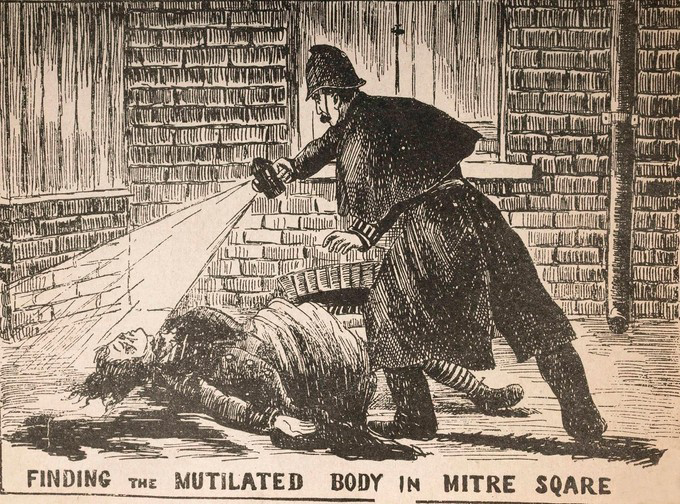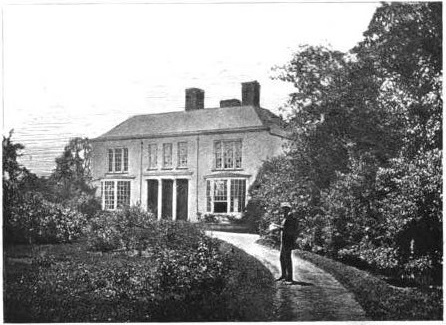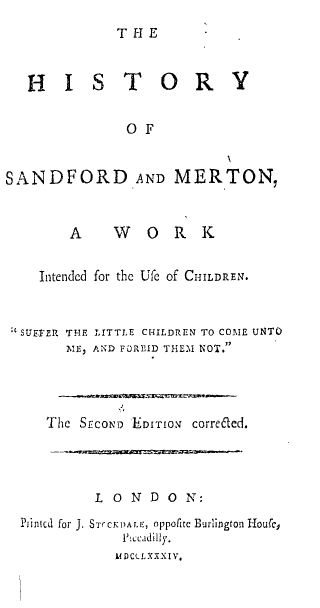|
Moral
A moral (from Latin ''morālis'') is a message that is conveyed or a lesson to be learned from a story or event. The moral may be left to the hearer, reader, or viewer to determine for themselves, or may be explicitly encapsulated in a maxim. A moral is a lesson in a story or in real life. Finding morals As an example of an explicit maxim, at the end of Aesop's fable of the Tortoise and the Hare, in which the plodding and determined tortoise won a race against the much-faster yet extremely arrogant hare, the stated moral is "slow and steady wins the race". However, other morals can often be taken from the story itself; for instance, that arrogance or overconfidence in one's abilities may lead to failure or the loss of an event, race, or contest. The use of stock characters is a means of conveying the moral of the story by eliminating complexity of personality and depicting the issues arising in the interplay between the characters, enabling the writer to generate a clear mes ... [...More Info...] [...Related Items...] OR: [Wikipedia] [Google] [Baidu] |
Morality Play
The morality play is a genre of medieval and early Tudor drama. The term is used by scholars of literary and dramatic history to refer to a genre of play texts from the fourteenth through sixteenth centuries that feature personified concepts (most often virtues and vices, but sometimes practices or habits) alongside angels and demons, who are engaged in a struggle to persuade a protagonist who represents a generic human character toward either good or evil. The common story arc of these plays follows "the temptation, fall and redemption of the protagonist."King, Pamela M. "Morality Plays." In ''The Cambridge Companion to Medieval English Theatre'', edited by Richard Beadle and Alan J. Fletcher. 2nd ed. Cambridge University Press, Cambridge, 2008: 235-262, at 235. English morality plays Hildegard von Bingen's '' Ordo Virtutum'' (English: "Order of the Virtues"), composed c. 1151 in Germany, is the earliest known morality play by more than a century, and the only medieval mus ... [...More Info...] [...Related Items...] OR: [Wikipedia] [Google] [Baidu] |
Aesop's Fables
Aesop's Fables, or the Aesopica, is a collection of fables credited to Aesop, a slave and storyteller believed to have lived in ancient Greece between 620 and 564 BCE. Of diverse origins, the stories associated with his name have descended to modern times through a number of sources and continue to be reinterpreted in different verbal registers and in popular as well as artistic media. The fables originally belonged to oral tradition and were not collected for some three centuries after Aesop's death. By that time, a variety of other stories, jokes and proverbs were being ascribed to him, although some of that material was from sources earlier than him or came from beyond the Greek cultural sphere. The process of inclusion has continued until the present, with some of the fables unrecorded before the Late Middle Ages and others arriving from outside Europe. The process is continuous and new stories are still being added to the Aesop corpus, even when they are demonstrably mor ... [...More Info...] [...Related Items...] OR: [Wikipedia] [Google] [Baidu] |
Jean-Jacques Rousseau
Jean-Jacques Rousseau (, ; 28 June 1712 – 2 July 1778) was a Genevan philosopher, writer, and composer. His political philosophy influenced the progress of the Age of Enlightenment throughout Europe, as well as aspects of the French Revolution and the development of modern political, economic, and educational thought. His '' Discourse on Inequality'' and '' The Social Contract'' are cornerstones in modern political and social thought. Rousseau's sentimental novel '' Julie, or the New Heloise'' (1761) was important to the development of preromanticism and romanticism in fiction. His '' Emile, or On Education'' (1762) is an educational treatise on the place of the individual in society. Rousseau's autobiographical writings—the posthumously published '' Confessions'' (composed in 1769), which initiated the modern autobiography, and the unfinished ''Reveries of the Solitary Walker'' (composed 1776–1778)—exemplified the late 18th-century " Age of Sensibility", and feature ... [...More Info...] [...Related Items...] OR: [Wikipedia] [Google] [Baidu] |
Victorian Morality
Victorian morality is a distillation of the moral views of the middle class in 19th-century Britain, the Victorian era. Victorian values emerged in all classes and reached all facets of Victorian living. The values of the period—which can be classed as religion, morality, Evangelicalism, industrial work ethic, and personal improvement—took root in Victorian morality. Current plays and all literature—including old classics like Shakespeare—were cleansed of content considered to be inappropriate for children, or "bowdlerized". Contemporary historians have generally come to regard the Victorian era as a time of many conflicts, such as the widespread cultivation of an outward appearance of dignity and restraint, together with serious debates about exactly how the new morality should be implemented. The international slave trade was abolished, and this ban was enforced by the Royal Navy. Slavery was ended in all the British colonies, child labour was ended in British facto ... [...More Info...] [...Related Items...] OR: [Wikipedia] [Google] [Baidu] |
Maria Edgeworth
Maria Edgeworth (1 January 1768 – 22 May 1849) was a prolific Anglo-Irish novelist of adults' and children's literature. She was one of the first realist writers in children's literature and was a significant figure in the evolution of the novel in Europe. She held views on estate management, politics and education, and corresponded with some of the leading literary and economic writers, including Sir Walter Scott and David Ricardo. Life Early life Maria Edgeworth was born at Black Bourton, Oxfordshire. She was the second child of Richard Lovell Edgeworth (who eventually fathered 19 children by four wives) and Anna Maria Edgeworth (''née'' Elers); Maria was thus an aunt of Francis Ysidro Edgeworth. She spent her early years with her mother's family in England, living at The Limes (now known as Edgeworth House) in Northchurch, by Berkhamsted in Hertfordshire. Her mother died when Maria was five, and when her father married his second wife Honora Sneyd in 1773, she went with ... [...More Info...] [...Related Items...] OR: [Wikipedia] [Google] [Baidu] |
Romeo And Juliet
''Romeo and Juliet'' is a tragedy written by William Shakespeare early in his career about the romance between two Italian youths from feuding families. It was among Shakespeare's most popular plays during his lifetime and, along with ''Hamlet'', is one of his most frequently performed plays. Today, the title characters are regarded as archetypal young lovers. ''Romeo and Juliet'' belongs to a tradition of tragic romances stretching back to antiquity. The plot is based on an Italian tale translated into verse as '' The Tragical History of Romeus and Juliet'' by Arthur Brooke in 1562 and retold in prose in '' Palace of Pleasure'' by William Painter in 1567. Shakespeare borrowed heavily from both but expanded the plot by developing a number of supporting characters, particularly Mercutio and Paris. Believed to have been written between 1591 and 1595, the play was first published in a quarto version in 1597. The text of the first quarto version was of poor quality, howeve ... [...More Info...] [...Related Items...] OR: [Wikipedia] [Google] [Baidu] |
Allegory
As a literary device or artistic form, an allegory is a narrative or visual representation in which a character, place, or event can be interpreted to represent a hidden meaning with moral or political significance. Authors have used allegory throughout history in all forms of art to illustrate or convey complex ideas and concepts in ways that are comprehensible or striking to its viewers, readers, or listeners. Writers and speakers typically use allegories to convey (semi-)hidden or complex meanings through symbolic figures, actions, imagery, or events, which together create the moral, spiritual, or political meaning the author wishes to convey. Many allegories use personification of abstract concepts. Etymology First attested in English in 1382, the word ''allegory'' comes from Latin ''allegoria'', the latinisation of the Greek ἀλληγορία (''allegoría''), "veiled language, figurative", which in turn comes from both ἄλλος (''allos''), "another, different ... [...More Info...] [...Related Items...] OR: [Wikipedia] [Google] [Baidu] |
Charles Dickens
Charles John Huffam Dickens (; 7 February 1812 – 9 June 1870) was an English writer and social critic. He created some of the world's best-known fictional characters and is regarded by many as the greatest novelist of the Victorian era.. His works enjoyed unprecedented popularity during his lifetime and, by the 20th century, critics and scholars had recognised him as a literary genius. His novels and short stories are widely read today. Born in Portsmouth, Dickens left school at the age of 12 to work in a boot-blacking factory when his father was incarcerated in a debtors' prison. After three years he returned to school, before he began his literary career as a journalist. Dickens edited a weekly journal for 20 years, wrote 15 novels, five novellas, hundreds of short stories and non-fiction articles, lectured and performed readings extensively, was an indefatigable letter writer, and campaigned vigorously for children's rights, for education, and for other social ref ... [...More Info...] [...Related Items...] OR: [Wikipedia] [Google] [Baidu] |
The Tortoise And The Hare
"The Tortoise and the Hare" is one of Aesop's Fables and is numbered 226 in the Perry Index. The account of a race between unequal partners has attracted conflicting interpretations. The fable itself is a variant of a common folktale theme in which ingenuity and trickery (rather than doggedness) are employed to overcome a stronger opponent. An ambiguous story The story concerns a Hare who ridicules a slow-moving Tortoise. Tired of the Hare's arrogant behaviour, the Tortoise challenges him to a race. The hare soon leaves the tortoise behind and, confident of winning, takes a nap midway through the race. When the Hare awakes, however, he finds that his competitor, crawling slowly but steadily, has arrived before him. The later version of the story in La Fontaine's Fables (VI.10), while more long-winded, differs hardly at all from Aesop's. As in several other fables by Aesop, the lesson it is teaching appears ambiguous. In Classical times it was not the Tortoise's plucky conduct i ... [...More Info...] [...Related Items...] OR: [Wikipedia] [Google] [Baidu] |
Children's Literature
Children's literature or juvenile literature includes stories, books, magazines, and poems that are created for children. Modern children's literature is classified in two different ways: genre or the intended age of the reader. Children's literature can be traced to traditional stories like fairy tales, that have only been identified as children's literature in the eighteenth century, and songs, part of a wider oral tradition, that adults shared with children before publishing existed. The development of early children's literature, before printing was invented, is difficult to trace. Even after printing became widespread, many classic "children's" tales were originally created for adults and later adapted for a younger audience. Since the fifteenth century much literature has been aimed specifically at children, often with a moral or religious message. Children's literature has been shaped by religious sources, like Puritan traditions, or by more philosophical and scienti ... [...More Info...] [...Related Items...] OR: [Wikipedia] [Google] [Baidu] |
Sandford And Merton
''The History of Sandford and Merton'' (1783–89) was a best-selling children's book written by Thomas Day. He began it as a contribution to Richard Lovell and Honora Sneyd Edgeworth's ''Harry and Lucy'', a collection of short stories for children that Maria Edgeworth continued some years after her stepmother died. He eventually expanded his original short story into the first volume of ''The History of Sandford and Merton'', which was published anonymously in 1783; two further volumes subsequently followed in 1786 and 1789. The book was wildly successful and was reprinted until the end of the nineteenth century.Darton, F. J. Harvey. ''Children's Books in England: Five Centuries of Social Life''. 3rd ed. Rev. Brian Alderson. Cambridge: Cambridge University Press (1982), 146. It retained enough popularity or invoked enough nostalgia at the end of the nineteenth century to inspire a satire, ''The New History of Sandford and Merton'', whose preface proudly announces that it will "t ... [...More Info...] [...Related Items...] OR: [Wikipedia] [Google] [Baidu] |
Literature
Literature is any collection of Writing, written work, but it is also used more narrowly for writings specifically considered to be an art form, especially prose fiction, drama, and poetry. In recent centuries, the definition has expanded to include oral literature, much of which has been transcribed. Literature is a method of recording, preserving, and transmitting knowledge and entertainment, and can also have a social, psychological, spiritual, or political role. Literature, as an art form, can also include works in various non-fiction genres, such as biography, Diary, diaries, memoir, Letter (message), letters, and the essay. Within its broad definition, literature includes non-fictional books, articles or other printed information on a particular subject.''OED'' Etymology, Etymologically, the term derives from Latin language, Latin ''literatura/litteratura'' "learning, a writing, grammar," originally "writing formed with letters," from ''litera/littera'' "letter". In sp ... [...More Info...] [...Related Items...] OR: [Wikipedia] [Google] [Baidu] |

_-_Foto_G._Dall'Orto_5_ago_2006.jpg)





.jpg)

